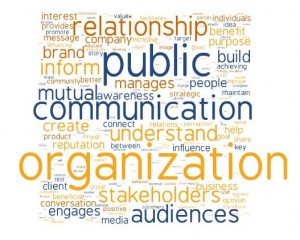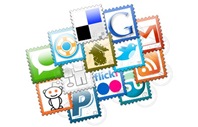PR Definition
We work in PR – and soon we’ll be able to tell you exactly what that means
A while back I jokingly joined a Facebook group called, “I Work in PR and My family and Friends Have No Idea What I Do,” partly out of curiosity, but mostly because it’s true. Chances are the description will strike a chord if you work in the industry:
“They know we spend all day at an office and that we are very busy, but no one we know understands what it is we do all day. We are equally unable to explain it to them.”
But that’s all about to change, hopefully.
It’s no secret that public relations has a PR problem. Forget the tension with the media (it’s high time to declare a truce and move on…but that’s another post); I’m talking about the fact that – while a myriad of definitions are floating around – existing descriptions are neither intuitive nor able to encompass PR’s ever-evolving scope of work.
 PRSA’s definition of public relations was last updated in 1982. Over the course of the past 10 years, the organization has assembled two special committees to explore modernizing the definition of public relations, but recent discussions, blog posts, tweets and mainstream articles have called for more decisive action. Public relations professionals, having grown tired of lack a de facto industry definition and unhappy with current descriptions, want to both modernize the definition and increase its value.
PRSA’s definition of public relations was last updated in 1982. Over the course of the past 10 years, the organization has assembled two special committees to explore modernizing the definition of public relations, but recent discussions, blog posts, tweets and mainstream articles have called for more decisive action. Public relations professionals, having grown tired of lack a de facto industry definition and unhappy with current descriptions, want to both modernize the definition and increase its value.
So late last year the Public Relations Society of America (PRSA) decided to tackle this conundrum with its “Public Relations Defined” initiative, setting out to answer the question, “What is public relations?” After collaborating with partners in allied associations and calling for open submissions, PRSA unveiled its three definition possibilities this past week:
1. Public relations is the management function of researching, engaging, communicating, and collaborating with stakeholders in an ethical manner to build mutually beneficial relationships and achieve results.
2. Public relations is a strategic communication process that develops and maintains mutually beneficial relationships between organizations and their key publics.
3. Public relations is the engagement between organizations and individuals to achieve mutual understanding and realize strategic goals.
We’ve got until January 23 to review, react and comment, and then the collective feedback will be aggregated and analyzed for use in a second “Definition of PR” summit. The goal of that meeting will be to produce three final definitions, on which the profession will be invited to vote, and then the final definition is slated to be announced at the end of February. For more information, annotated versions of the definitions and to leave your thoughts for consideration in the process, click here.
Do you think the definitions above are on track? If not, how would you better define PR? We’d love to hear what you think in the comments below.

 Hello my name is Claire, and I am a reality TV junkie – and my network of choice is
Hello my name is Claire, and I am a reality TV junkie – and my network of choice is 


 Unless you’re living under a rock, you’ve likely heard of Justin Bieber, the latest singing sensation that has teens and preteens around the world screaming and sobbing just for a quick, but memorable, glimpse of his dashing smile and famous hair. Last Sunday afternoon, I took my seven (going on 17)-year old daughter to see the new Justin Bieber movie “Never Say Never,” which came in second place at the box office. As I sat there watching this surprisingly inspiring movie, I noticed my little girl get a twinkle in her eye and I began to understand the intriguing phenomenon known as “Bieber Fever.”
Unless you’re living under a rock, you’ve likely heard of Justin Bieber, the latest singing sensation that has teens and preteens around the world screaming and sobbing just for a quick, but memorable, glimpse of his dashing smile and famous hair. Last Sunday afternoon, I took my seven (going on 17)-year old daughter to see the new Justin Bieber movie “Never Say Never,” which came in second place at the box office. As I sat there watching this surprisingly inspiring movie, I noticed my little girl get a twinkle in her eye and I began to understand the intriguing phenomenon known as “Bieber Fever.”